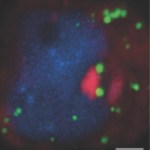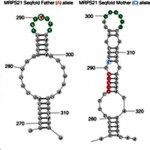Protein folding
“Inclusion bodies – those clumps of protein that are found in the brain cells of Alzheimer’s patients – are, sadly, a product of aging,” says Dr. Maya Schuldiner. “They can form naturally in practically all cells, but when these cells get old, the mechanism for clearing them away starts to fail.”
That is not great news for those of us who are already seeing signs of incipient dementia every time we forget a name or misplace our keys. But of course there is good news too. Schuldiner has discovered a “detergent” that cells make to wash away those nasty protein clumps. And she believes that, in…
At the level of biomolecules, life boils down to two basic principles: sequence and folding. We know, for example, that the sequence of nucleotides in the DNA contains our genetic blueprint, but the way that our DNA is folded and wrapped up in each chromosome helps determine which genes are easily accessible for copying. Proteins – sequences of amino acids – fold into intricate shapes before assuming their duties. So it is no surprise that the third main molecular sequence in the cell – the RNA, made up of single strands of nucleotides – folds as well. Nucleotides are built to pair up – DNA…
Proteins are strung together from amino acids attached in long chains, one after the other. But for most proteins, this is just the beginning - next they must fold. "Folding" is the general term for the way that a protein strand twists, coils, winds, pleats and creases into an intricate three-dimensional structure. Only then can it go to work.
The sequence of amino acids is what determines the final shape of the protein: Molecules assembled on the same plan will end up in the exact same configuration. The funny thing is, they don't all go through the same set of steps to arrive at their…


